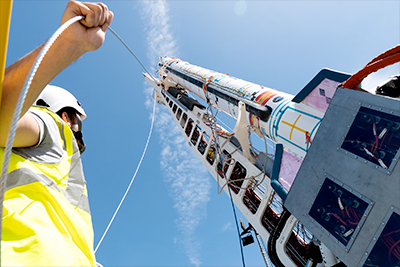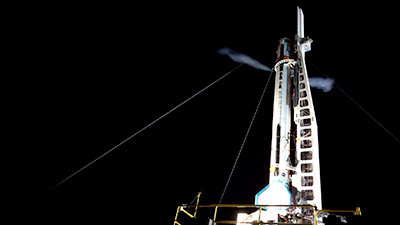Spain's MIURA 1 launch campaign kicks offMIURA 1 launch campaign kicks off. PLD Space has successfully concluded the two pre-launch tests of the first flight unit of the Spanish launcher, specifically the umbilical cable tests and the Wet Dress Rehearsal (WDR). The positive results obtained during these tests effectively give the green light to the flight mission of the suborbital microlauncher.

The launch will take place this October at the El Arenosillo Experimentation Centre (CEDEA) of the National Institute for Aerospace Technology (INTA) in one of the different launch windows that PLD Space has reserved in October and November. The company will announce this date approximately 24 hours in advance.
PLD Space is gearing up for the third launch attempt of MIURA 1. On 31 May, the company postponed the flight of its microlauncher due to the winds at altitude, and on June 17, it tried again, but an automatic abort occurred just 0.2 seconds prior to lift-off. Since then, PLD Space has not been able to schedule a new flight attempt over due to mandatory compliance with current fire prevention regulations, the high temperatures at this time of year and its commitment in conjunction with the Guardia Civil to ensure safety in the area.
Consequently, the team has spent recent months meticulously analysing the events of the initial launch and conducting comprehensive checks to ensure a successful outcome for the upcoming flight.
The main conclusion of the analysis conducted confirms that the automatic abort resulted from the release timing of the umbilicals (the cables connecting the rocket to the launchpad). Further insight revealed a mere one-tenth of a second delay in the release of one of the umbilicals.
The ground software interpreted that one of these cables had not been released and automatically sent a command to abort the launch. The reality is that this release had indeed been executed, but with a delay of 0.1 seconds. Data obtained by PLD Space shows that this delay was caused by a one-degree deviation in inclination measured by a strongback sensor.
"If the cable is less taut than expected, the pull time is longer because the system only has to pull the connector but first it has to tension the cable and so the margin of error was very small," explains PLD Space Launch Director and Co-founder Raúl Torres. "The rocket engines function until they're told not to and in this case, it was the ground software that sent the command to not continue with the launch because it understood that the umbilicals were still connected".
With these conclusions, the Spanish space company has made the necessary adjustments to the inclinometer and, over the last few weeks, has undergone a comprehensive series of tests to ensure the repeatability of the system. Likewise, the response times of the software have been adjusted according to the results obtained during these tests. Simultaneously, PLD Space has conducted maintenance on every integrated subsystem of the rocket.
Ready for the next launch
Following thorough technical inspections, and now with the warmer months behind it, the MIURA 1 flight unit has recently been transported back to PLD Space's launch base in Huelva from its main office in Elche. There, it underwent the two recent pre-launch tests.

The first corresponds to the umbilical cable connections. The team has replicated the release of these cables with the rocket in a vertical position on the launchpad and the result has been as expected.
The second test is known as Wet Dress Rehearsal (WDR). This is a full propellant loading test, which includes all aspects of the launch sequence prior to the ignition of the rocket's engines. The success of this test means that MIURA 1 is ready to fly in the next launch window scheduled for October.
What remains pending is for INTA and PLD Space to formalize the flight readiness review (FRR) and, following the integration of the payload from the German Center for Applied Technology and Microgravity (ZARM), affiliated with the University of Bremen, to proceed with the flight authorization, known as the Launch Readiness Review (LRR).
From that moment on, the Spanish company has a series of launch windows during October and November to proceed with new flight attempts, which will be communicated publicly 24 hours in advance.
This complex operation is exposed to a number of internal and external variables that PLD Space has defined within its risk mitigation plan. During pre-launch, the Spanish company considers changing weather forecast (especially upper winds), safety range violations or technical issues associated with, for example, propellant loading. During autosequence, the Launch team also considers possible abort situations resulting from technical anomalies such as onboard sensor readings. Finally, PLD Space anticipates possible scenarios during the flight related to the deviation of the trajectory or the behavior of some of the subsystems.
This analysis of possible risks highlights the difficulty of the mission, for which the Spanish company is ready to carry out. "The success rate of a first launch in the industry is about 45%," says PLD Space Executive President, Ezequiel Sánchez. "We are aware that we have taken on a challenge in the European industry at the highest level, but we face it with the confidence and leadership that comes from our track record and the know-how we have been accumulating."













